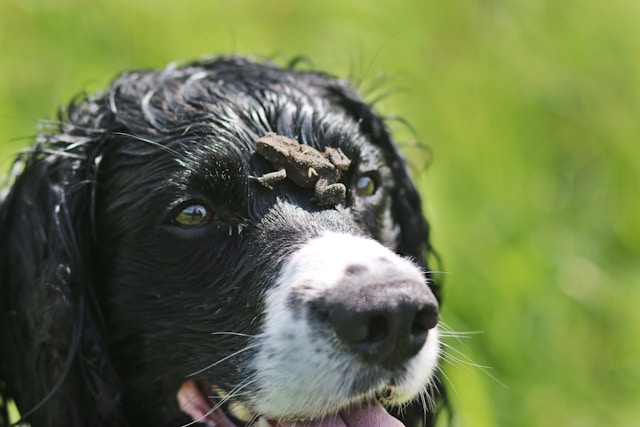Are Frogs and Toads Poisonous to Dogs? A Comprehensive Guide

Frogs and toads are fascinating creatures that can be found in gardens, ponds, and various outdoor environments. While they play important roles in the ecosystem, pet owners need to be aware of the potential risks these amphibians pose to their dogs. In this comprehensive guide, we will explore the toxicity of frogs and toads to dogs, identify which species are dangerous, discuss symptoms of poisoning, and provide essential information on how to protect your pet.
Understanding Amphibian Toxicity
1. Why Are Frogs and Toads Toxic?
Frogs and toads produce toxins as a defense mechanism against predators. These toxins can vary in potency and type depending on the species. The toxins are often found in the skin, and when an animal bites or swallows these amphibians, it can lead to poisoning.
- Frogs: Most frogs are not toxic, but some species, especially those with bright colors or patterns, may produce mild toxins. Generally, frog toxins are less potent than those of toads.
- Toads: Toads are more commonly associated with toxicity. They produce more potent toxins, often found in their skin and parotoid glands (large glands located behind the eyes). The toxins can cause severe reactions if ingested or absorbed through the mouth.
2. Common Toxic Species
Not all frogs and toads are toxic, but some species are particularly dangerous and are poisonous to dogs. Here are a few examples:
- Cane Toad (Bufo marinus): Known for its large size and distinctive wart-like bumps, the cane toad produces a potent toxin called bufotoxin. This toxin can cause severe poisoning in dogs.
- Colorado River Toad (Incilius alvarius): Also known as the Sonoran Desert toad, it secretes toxins that can be highly toxic to dogs.
- American Toad (Anaxyrus americanus): Common in North America, this toad has toxins that can cause gastrointestinal distress and other symptoms in dogs.
- Marine Toad (Rhinella marina): Similar to the cane toad, it produces bufotoxin, which can be harmful to dogs.
Symptoms of Toad and Frog Poisoning
1. Immediate Reactions
If your dog encounters a toxic toad or frog, they might exhibit a range of symptoms depending on the amount of toxin they were exposed to. Immediate reactions may include:
- Excessive Drooling: One of the first signs of poisoning is excessive salivation. The toxins can irritate the mouth and throat, leading to increased drooling.
- Foaming at the Mouth: This can occur if your dog has licked or bitten a toxic amphibian. It’s often a sign of oral irritation or poisoning.
- Vomiting: Toxins can cause gastrointestinal upset, leading to vomiting. This can help your dog expel the toxins but may also indicate severe poisoning.
- Diarrhea: Along with vomiting, diarrhea is a common symptom as the body tries to rid itself of the toxins.
2. Serious Symptoms
In more severe cases, your dog might show serious symptoms that require immediate veterinary attention:
- Difficulty Breathing: Toxicity can affect the respiratory system, leading to labored or rapid breathing.
- Seizures or Tremors: Severe poisoning can impact the nervous system, causing seizures, muscle tremors, or incoordination.
- Heart Arrhythmias: Some toxins can interfere with normal heart rhythms, potentially leading to arrhythmias.
- Lethargy or Weakness: Affected dogs may become unusually tired, weak, or disoriented.
- Gum Color Changes: Toxins can cause changes in gum color, such as a bluish or pale tint, indicating a serious reaction.
What to Do If Your Dog Is Poisoned
1. Immediate Actions
If you suspect your dog has been exposed to a toxic frog or toad, take the following steps immediately:
- Rinse Your Dog’s Mouth: If possible, rinse your dog’s mouth with water to remove any remaining toxins. Avoid using water that is too forceful, as this could cause choking.
- Avoid Inducing Vomiting: Do not induce vomiting unless instructed by a veterinarian. Vomiting might not always be effective and could cause further harm in some cases.
- Contact Your Veterinarian: Call your veterinarian or an emergency animal poison control hotline as soon as possible. Provide details about the exposure, including the type of amphibian, the amount of contact, and any symptoms observed.
2. Veterinary Treatment
Your veterinarian will assess the severity of the poisoning and recommend appropriate treatment, which may include:
- Activated Charcoal: Administered to absorb and neutralize toxins in the digestive tract.
- Intravenous Fluids: To maintain hydration, support kidney function, and flush out toxins.
- Medications: To manage symptoms such as vomiting, seizures, or heart arrhythmias.
- Supportive Care: Monitoring and supportive treatments to ensure recovery and prevent complications.
Preventing Exposure to Toxic Amphibians
1. Monitor Outdoor Activities
Since some frogs and toads can be poisonous to dogs , Supervise your dog when they are outdoors, especially in areas where frogs and toads are common. Keep them on a leash during walks in environments where these amphibians may be present.
2. Check Your Yard
If you have a garden or pond, regularly check for and remove any frogs or toads. Consider installing barriers or using repellents to deter amphibians from entering your yard.
3. Educate Yourself and Others
Inform family members and other pet owners about the risks of toxic amphibians. Knowing which species to watch out for can help prevent accidental encounters.
4. Create a Safe Environment
Ensure your dog’s play areas are free from potentially dangerous wildlife. This includes checking for other wildlife that might pose a risk to your pet.
Conclusion
Frogs and toads can pose significant risks and there are some which might be poisonous to dogs, particularly those that produce potent toxins. Understanding which species are toxic, recognizing the symptoms of poisoning, and taking immediate action can help protect your pet from harm. Always consult your veterinarian if you suspect your dog has been exposed to a toxic amphibian. By being vigilant and proactive, you can minimize the risks and ensure your furry friend stays safe and healthy.




